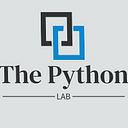Member-only story
Volatility Forecasting Model: Develop a model that predicts future stock market volatility using yfinance
Welcome to this tutorial on developing a volatility forecasting model using Python. In this tutorial, we will explore how to retrieve historical volatility data using the yfinance library and use techniques like GARCH (Generalized Autoregressive Conditional Heteroskedasticity) to estimate and forecast volatility in the stock market.
Volatility is a measure of the variation in price of a financial instrument over time. It is an important concept in finance as it helps investors assess the risk associated with an investment. By forecasting volatility, we can gain insights into potential market movements and make informed investment decisions.
In this tutorial, we will cover the following topics:
- Retrieving historical volatility data using
yfinance - Exploratory data analysis of the volatility data
- Implementing the GARCH model for volatility forecasting
- Evaluating the performance of the volatility forecasting model
Throughout the tutorial, we will use object-oriented programming concepts to build a comprehensive and reusable volatility forecasting model. We will also incorporate Python fundamentals and explain them in a…
